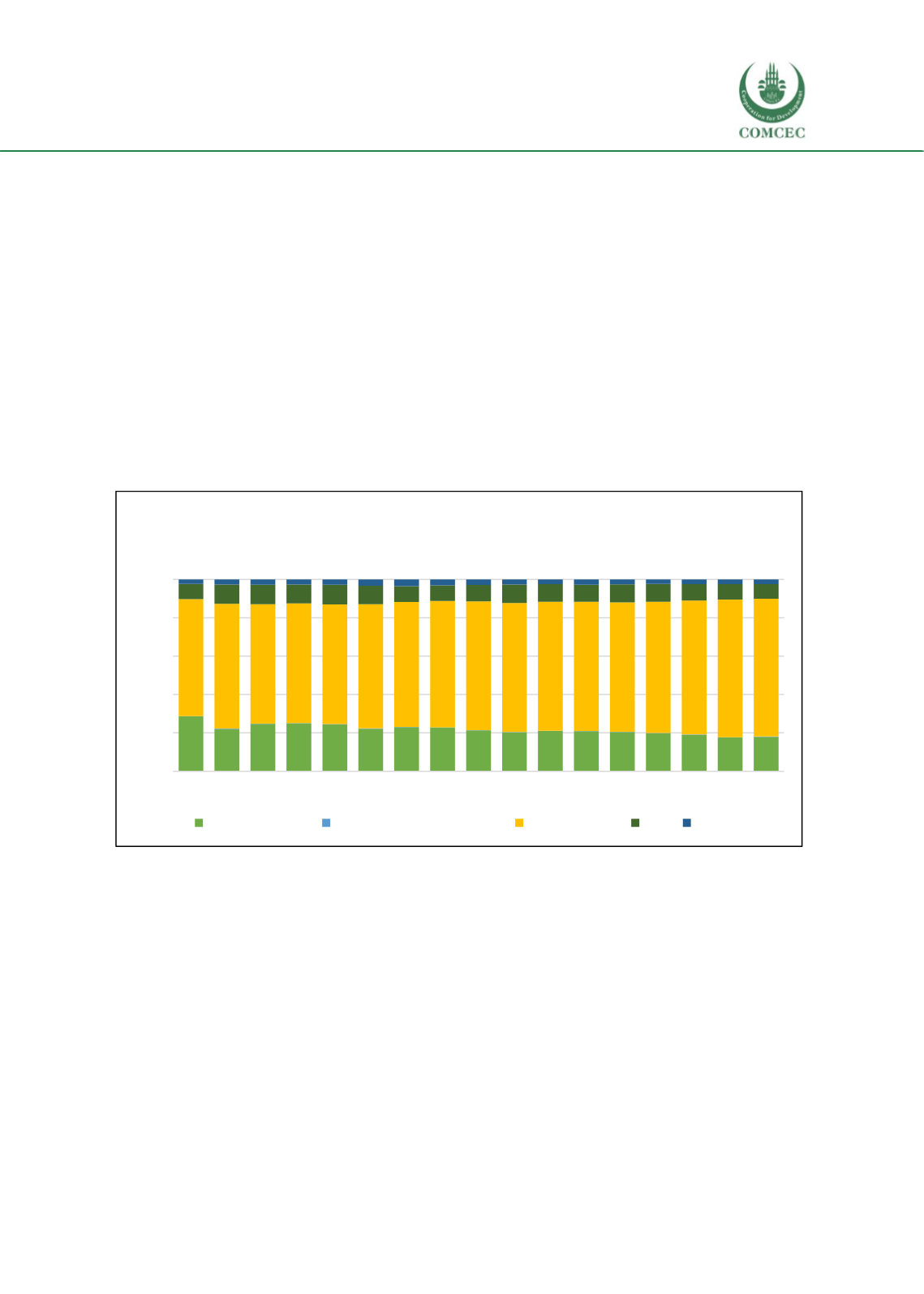

Child and Maternal Mortality
in Islamic Countries
81
Overall, Bangladesh's health financing analysis (Table 3.1) shows that the country's Gross
Domestic Products (GDP) has doubled between 2000 and 2016, and the current health
expenditure (CHE) per capita has increased almost 2.5 times during the same period. However,
the share of the out-of-pocket spending
(OOPS) is very high in Bangladesh, which was further
increased from 61% to 72% of the CHE between 2000 and 2016 (Figure 3.26 and 3.61). During
this period, the general government's expenditure (GGE) has increased slightly. CHE per capita
in US$ increased monotonically from $14 in 2000 to $34 in 2016 (Figure 3.27) and the CHE as a
proportion of GDP has increased slightly.
The Domestic Government Expenditure represented about 5.0% or below of total budget (GGE)
through 2000-2014, which is only one-third of the World Health Organization's (WHO)
recommendation of 15% for countries like Bangladesh. More recently, 2015-2016, the GGHED
was depleted to 3% of the GGE, which could jeopardize the attainment of the universal health
coverage (UHC).
Figure 3. 26 Current health Expenditure by revenue sources
Source: WHO Global Health Expenditure Database.
0%
20%
40%
60%
80%
100%
2000 2001 2002 2003 2004 2005 2006 2007 2008 2009 2010 2011 2012 2013 2014 2015 2016
Bangladesh: Current Health Expenditure (By Revenue
Sources)
Domestic public
Voluntary health insurance Out-of-pocket
Aid Other
















